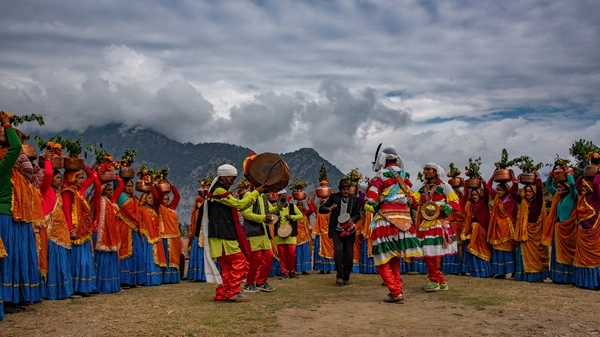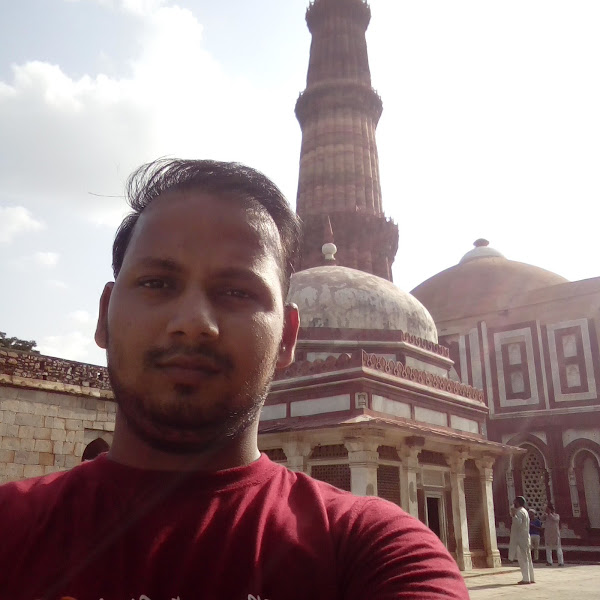Uttarakhand is often called “Devbhoomi” (Land of the Gods) for its deep spiritual roots and rich traditions. Beyond its famous pilgrimage sites like Kedarnath, Badrinath, and Haridwar, the state has a vibrant folk culture reflected in its music, festivals, and traditional dances.
The folk dances of Uttarakhand are more than entertainment—they are a way of preserving oral traditions, expressing devotion, celebrating harvests, and narrating historical tales. From the acrobatic Langvir Nritya to the devotional Chholiya and the energetic Barada Nati, each dance showcases the resilience, spirituality, and joy of the mountain people.

Major Traditional and Folk Dances of Uttarakhand
| Dance Name | Type | Region | Short Description |
| Langvir Nritya | Acrobatic / Martial | Tehri Garhwal | Solo dance performed on a bamboo pole with daring stunts. |
| Barada Nati | Festive / Folk | Jaunsar-Bawar, Dehradun | Group dance during fairs and harvest celebrations. |
| Chholiya Dance | Martial / Devotional | Kumaon region | Sword dance performed at weddings and festivals. |
| Jhora | Social / Folk | Kumaon Hills | Performed in circles to celebrate festivals and unity. |
| Pandav Nritya | Religious / Folk | Garhwal | Based on Mahabharata episodes; narrates stories of Pandavas. |
| Bhotiya Dance | Tribal / Ritual | By Bhotiya Tribe | Dance performed to honor ancestors and ward off evil. |
| Chapeli | Romantic / Folk | Kumaon | Male-female duet dance showcasing love and courtship. |
| Thali Nritya | Acrobatic / Folk | Kumaon & Garhwal | Women balance brass plates (thali) on their heads while dancing. |
| Chancheri | Festive / Social | Garhwal | Performed during weddings and festivals, often in large groups. |
Detailed Explanation of Major Dances
- Langvir Nritya – The Acrobatic Bamboo Dance
- Origin: Unique to Tehri Garhwal, performed only by men.
- Cultural Significance: Showcases strength, balance, and courage; once symbolized martial training.
- Costumes: Traditional dhotis with colorful waistbands and turbans.
- Instruments: Dhol and damau (folk drums).
- Occasions: Independence Day, fairs, and cultural programs.
- Image Suggestion: Performer balancing on a bamboo pole doing acrobatic stunts.
- Barada Nati – Joyous Group Dance of Jaunsar-Bawar
- Origin: Belongs to the Jaunsar-Bawar tribal belt in Dehradun.
- Cultural Significance: Symbol of community bonding and harvest celebrations.
- Costumes: Women wear ghagra-choli with heavy jewelry; men wear traditional dhoti and waistcoats.
- Instruments: Dhol, damau, and hurka.
- Occasions: Fairs, Diwali, Holi, and marriage celebrations.
- Image Suggestion: Men and women in traditional costumes performing in large groups.
- Chholiya Dance – The Sword Dance of Kumaon
- Origin: Dates back 1,000 years, originally performed by Rajputs.
- Cultural Significance: Martial dance meant to ward off evil spirits during weddings.
- Costumes: Men wear white churidar with colorful waist sashes and carry swords and shields.
- Instruments: Turhi (horn), nagara, dhol, and bagpipes (influenced by British army).
- Occasions: Weddings, fairs, and religious processions.
- Image Suggestion: Dancers with swords and shields in a wedding procession.
- Jhora – The Circle Dance of Kumaon
- Origin: Ancient folk dance of Kumaon performed in groups.
- Cultural Significance: Represents unity, equality, and harmony.
- Costumes: Colorful saris for women and traditional attire for men.
- Instruments: Harmonium, dhol, and flute.
- Occasions: Basant Panchami, Holi, and village fairs.
- Image Suggestion: Men and women holding hands dancing in circles in an open ground.
- Pandav Nritya – Epic Storytelling Through Dance
- Origin: Garhwal region, rooted in Hindu epics.
- Cultural Significance: Narrates Mahabharata episodes like Draupadi swayamvar or Kurukshetra battle.
- Costumes: Mythological attire, crowns, ornaments, and face paint.
- Instruments: Dhol, damau, and bhankora.
- Occasions: Religious festivals, Ram Lila, and temple gatherings.
- Image Suggestion: Dancers dressed as Pandavas performing in front of villagers.
- Bhotiya Dance – Ancestral Ritual of the Bhotiya Tribe
- Origin: By the Bhotiya tribal community in Uttarakhand.
- Cultural Significance: Performed to appease ancestors and ensure protection from evil spirits.
- Costumes: Tribal garments, woolen shawls, and ornaments.
- Instruments: Drums, bells, and folk wind instruments.
- Occasions: Tribal rituals, marriages, and death ceremonies.
- Image Suggestion: Bhotiya tribal men and women dancing around a ritual fire.
- Chapeli – A Romantic Duet Dance
- Origin: Popular in Kumaon region.
- Cultural Significance: Dance of love and courtship, performed by young men and women.
- Costumes: Women wear ghagras and jewelry, while men wear traditional kurta-dhoti.
- Instruments: Harmonium, flute, and tabla.
- Occasions: Weddings, fairs, and spring festivals.
- Image Suggestion: A couple performing in traditional Kumaoni attire.
- Thali Nritya – The Balancing Act Dance
- Origin: Kumaon and Garhwal regions.
- Cultural Significance: Performed by women balancing brass plates (thalis) on their heads, showcasing grace and discipline.
- Costumes: Ghagra-choli, ornaments, and veil.
- Instruments: Dhol, damau, and hurka.
- Occasions: Fairs, marriages, and festive gatherings.
- Image Suggestion: Women balancing thalis with lit diyas while dancing.
- Chancheri – A Festive Social Dance
- Origin: Garhwal region.
- Cultural Significance: Brings the whole community together in celebrations.
- Costumes: Traditional dresses, colorful scarves, and jewelry.
- Instruments: Dhol, damau, and flute.
- Occasions: Weddings, fairs, and Holi celebrations.
- Image Suggestion: Men and women forming large dance circles during a festival.
FAQs
Q1. Which is the most famous dance of Uttarakhand?
👉 The Chholiya Dance of Kumaon is the most famous, often performed during weddings.
Q2. How many folk dances does Uttarakhand have?
👉 Uttarakhand has more than 10 major folk dances, including Langvir Nritya, Barada Nati, Chholiya, Jhora, Pandav Nritya, and Chapeli.
Q3. Are all dances of Uttarakhand religious?
👉 No, the state has a mix of devotional, martial, romantic, and festive dances, reflecting different aspects of society.
Q4. Which tribal community’s dance is popular in Uttarakhand?
👉 The Bhotiya tribe is known for its ritualistic dance performed to honor ancestors.
Conclusion
The folk and traditional dances of Uttarakhand are a window into the spirituality, courage, and communal harmony of its people. From the sword-bearing Chholiya dancers to the graceful women performing Jhora and Thali Nritya, every performance reflects the simplicity and devotion of mountain life.
These dances are not just artistic expressions but also a way to preserve oral history, bind communities, and celebrate festivals. They are the heartbeat of Uttarakhand’s culture, keeping alive the traditions of Devbhoomi for generations to come.

Hello, I’m Kapil Kumar, a seasoned SEO expert and blogger at WinnersList.in. My mission is to spotlight exceptional individuals and organizations across various domains. Through curated lists, profiles, and inspiring stories, I aim to celebrate outstanding achievements and inspire the next generation of champions. Join me in this journey.
